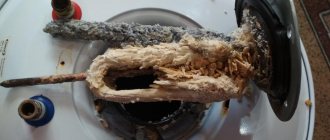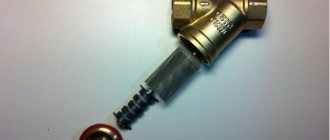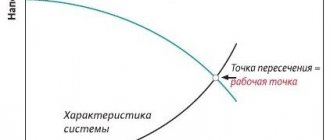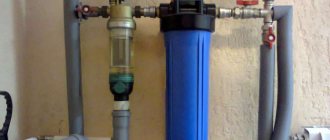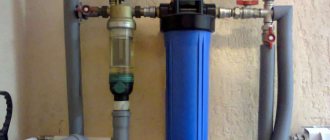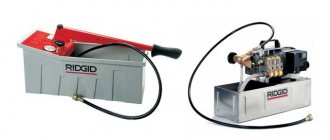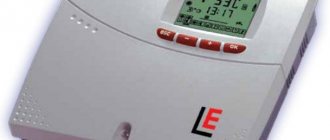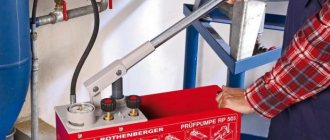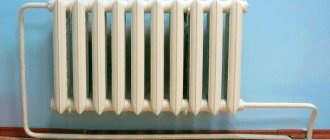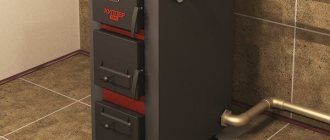Modern heating systems require timely maintenance as one of the conditions for long-term and trouble-free operation. And if in the components and systems of a heating boiler this is done using special equipment and equipment, then for the coolant and radiators such maintenance comes down to constantly maintaining cleanliness standards. This is where mud collectors for heating systems are needed - indispensable devices for preventing the sedimentation of sludge and dirt in pipes and radiators.
Types of mud filters
By type of particle screening. In a mesh mud pan, dirt and other elements are captured by a metal mesh, and then retained in the storage area of the filter.
Cleaning the heating system sump is simple - you just need to unscrew the filter, and then rinse it and clean it mechanically with brushes.
There are filters with magnetic elements; they capture metal particles that inevitably appear in the water of the heating circuit.
By type of service
- Self-cleaning. The sediment that settles at the bottom of the glass is automatically washed away by a stream of water, so there is no need to maintain such dirt traps.
- Non-flushing. In this case, after prolonged operation, the CO section needs to be partially dismantled to replace the filter element.
- Flushing. The filter glass needs to be systematically cleaned using running water and soft brushes.
By installation type
- Mud collectors with a coupling type of connection. To install such a filter, you will need a set of wrenches.
- Filters with a flange modification of the connection are joined through an O-ring, and tightened along the edges of the connection with bolted fasteners.
- Mud traps with a PP pipe circuit are used mainly for small cross-section pipes.
Installation and maintenance of main filters
Installing a carbon filter for hot water or any other type of treatment plant is quite simple
It is only important to follow the step-by-step instructions and be consistent
How to install a filter: step-by-step instructions
The installation process of the main filter consists of the following steps:
- First, you need to stop the water supply to the house, and also drain the remaining liquid from the taps in the kitchen or bathroom. This will get rid of any remaining liquid. However, before performing installation work, you need to install a basin under the insertion point for water that may leak.
- You need to put marks on the wall to fix the filtration system. The fastening must be rigid, since any vibrations can damage the system.
- Using the marks, holes are made into which the plastic pieces of dowels will be placed.
- Next, the filter is connected to the pipes using couplings. To ensure the tightness of the joints, FUM tape is used.
- The device is fixed to the wall using self-tapping screws.
- To assess the quality of installation, you need to restore the water supply and open any tap for a few minutes. During this period of time, the cartridge will be cleaned and the system will be cleared of air.
- From the moment the installation work is completed and the filters are started for the first time, the system’s service life begins to count.
How to change cartridges
Metal water filters are equipped with special removable cartridges. During operation, they may fail and need to be replaced. It is not difficult to carry out such a procedure with your own hands. To do this, you should follow these instructions:
- We turn off the tap at the entrance to the house.
- Relieve the pressure in the system.
- To prevent neighbors from flooding, it is better to place a basin under the flask.
- Using the key from the basic package, you need to unscrew the flask.
- Next, remove the filter part, wash the mesh and attach a new cartridge. The flask is also cleaned of impurities.
- After installing the flask in its original place, you need to make sure that there are no leaks.
Proper and timely replacement of working parts will ensure complete cleanliness of the liquid and eliminate the problem of pressure surges when cartridges become clogged.
How to replace the filler
And although the filling filter with filler has a simple structure, replacing this substance can be difficult. To avoid mistakes, you should follow these instructions:
- First you need to disassemble the filtration column and remove the control valve.
- Next, you should unload the used media and clean the equipment and add new filter media.
- At the next stage, the system is assembled and connected to the water supply.
Principle of operation
The principle of operation of a self-flushing dirt trap is based on slowing down the flow rate of the coolant:
- The coolant, when it is inside the housing of the filter element, begins to move at a lower speed. This happens due to the fact that the diameter of the pipeline expands in this section. Therefore, under the force of gravity, the particles precipitate.
- After this, the liquid flows through the filter located at the outlet pipe, and then goes into the main pipeline.
- Removal of accumulated dirt and particles is carried out through a drain pipe or cap, which is separated by ball valves. After each cleaning, it is important to check for leaks, rust on connections, and so on.
Attention! We recommend installing a hydraulic resistance sensor into your system, in this case you will always know when it is necessary to clean the dirt trap. You just need to install it strictly following the instructions from the manufacturer, in which case it will display reliable data.
Peculiarities
A mud filter is a device for filtering and purifying water inside heating systems. Such a filter prevents the formation of deposits on the internal walls; it filters out foreign objects in the pipeline. This device has a number of modifications, each of which has its own characteristic differences. They comply with GOST standards; they are selected taking into account the cross-sectional diameter of the pipes. In general, the purpose of the devices is to clean the coolant before it enters the system itself.
The devices operate on the principle of a colander: water flows through a pipe into the mud pan, at the bottom of which suspensions settle. The purified liquid continues to move through the outlet pipe and enters the heating system. By changing the direction of water flow in the water supply, the mud filter divides the water into clean liquid and dirt, which settles in a special filter container.
This device is functional, you can use it to do the following:
- increase the efficiency of the heating system;
- equalize the thermal output of batteries;
- extend the service life of each element of the heating system;
- reduce home heating costs;
- reduce the risk of emergency situations and leaks;
- Eliminate the need for manual flushing of the system.
Such products protect the main components of the system from dirt and clogging of working channels. They remove dirt from contaminating pipe channels, taps, air valves, and expansion tank pipes. This ensures an increase in high-quality heating of the coolant several times. During normal operation, the water condition will be acceptable for circulation in the system without deposition of lime and alkaline salts. The heat supply inside the pipes will be correct, without wasting energy.
The mud trap is a tool for improving the operation of the system, a unit for expanding the pipeline system by changing the direction of the water flow. Typically, pressure gauges are installed near it, indicating the degree of hydraulic resistance. They are installed on both sides of the filter. A distinctive feature of the installation is the fact that the sump must be directed towards the coolant flow. For ease of installation, manufacturers make an arrow on the body indicating the direction of movement.
Over time, large debris and dirt will accumulate in the sump and will need to be removed. To service the mud pan, first shut off the system, then unscrew the nut located at the bottom of the body. After this, take out a special glass with suspensions. The container is emptied, then put in place and the nut is screwed on. The location of the sump determines the frequency of its cleaning. For example, if a buyer buys a product with a vertical glass, it will have to be cleaned more often.
The principle of operation of the mud collector is extremely simple. This process is cyclical and is repeated many times. However, choosing a product is impossible without at least a superficial understanding of the features of its varieties. After all, not every type of device is suitable in a particular case. And it’s not even a matter of price, but of the different cleaning capabilities of individual modifications.
Advantages and disadvantages
Advantages
- Installing a mud trap significantly extends the life of the main heating system equipment (radiators, connections, pump, etc.).
- Reduced fuel costs. It is very simple to justify this: if there are fewer particles and dirt in the pipeline, then the heat transfer is good, which means the fuel is fully consumed.
- Complete protection of the convective units of the heat generator.
Flaws
- If the coolant in the system has been dirty for a long time, then you will have to clean the mud trap many times.
How often does it need to be cleaned?
Due to water purification and retention of various debris, which does not disappear over time, it begins to accumulate. For this reason, over time, the water filter installed on the pipe becomes clogged. This leads to a decrease in water pressure, and over time, its complete absence. When such situations occur, it is necessary to clean the internal structural elements, for which the device should be removed, disassembled and washed.
Worth knowing! When the filter is sealed along with the water meter, you need to call a technician from the management company who will remove the seals. Once cleaning is complete, it is recommended to install a non-return valve, allowing cleaning to be carried out without the need to call a specialist further.
How to install a mud pan
Before direct installation and purchase of materials, you should create a more or less accurate plan for the heating system. After this, you need to identify the most successful places for installing a mud trap; when drawing up an installation diagram, you should take into account as many nuances as possible: contour turns, bends and flow speed.
Installation is carried out taking into account the following recommendations:
- Dirt traps are installed exclusively on horizontal sections of the circuit.
- Installation is carried out between 2 ball valves.
- A mud trap is installed in front of the water flow sensor (if you have one built into the CO).
How to properly install a mud trap in a heating system, follow these instructions:
- First, all the coolant is drained from the heating system (if there are no shut-off valves nearby).
- Then a section of horizontal pipeline no more than 1 meter is cut out with a grinder (if the pipes are steel) or cut with a pipe cutter (if the pipes are polypropylene)
- Fittings are soldered or screwed in to connect ball valves.
- After this, small sections of pipes and the mud tank itself are connected. It should be oriented strictly downwards, and at an acute angle towards the flow.
- At the end of the system operation, the system is filled with coolant, the air is vented, and then the filter system is tested for leaks.
Before installing the mud pan, do not forget to carefully read the instructions from the manufacturer.
Important! When purchasing, it is important to consider the size of the mud traps for the heating system, as they should trap contaminants with the greatest efficiency.
Installation of a sump for a heating system
In order to install a magnetic filter for heating or a filter of any other type, you should familiarize yourself with the following recommendations that can simplify the entire work process:
- Even before installation begins, it is necessary to carefully prepare the system pipes, cleaning them from rust and other harmful particles.
- When deciding which type of sump design to use for a particular heating circuit, you need to be guided solely by its operational characteristics, in particular, the conditions under which the equipment will be used - operating pressure, temperature readings, etc.
- It is better to choose a location for installing the sump tank where access to the device will be as convenient as possible, taking into account that the filter should be mounted in the area in front of the circulation pump.
- One of the prerequisites for installation is that the cross-section of the filter opening must be identical to the cross-section of the pipe. This measure will ensure the strength of the connection and will prevent the mechanism from subsequently moving aside.
How to maintain a dirt filter
Service algorithm:
- If the heating system begins to work incorrectly, the first thing you need to do is stop the circulation pump.
- Next, turn off the taps on both sides of the filter.
- Next, the connection securing the mud catcher is unscrewed.
- The filter glass is washed and cleaned well by any means.
- Next, assembly is performed in reverse order.
Additionally, you can clean the section of the pipe adjacent to the mud trap; this can be done with a long, strong stick or wire with a foam sponge attached.
We hope that you have carefully studied our article and now understand how to install a mud trap on a heating system. We wish you all the best, do not forget to periodically clean the mud pan, and then the heating system will serve you faithfully for several decades!
Cleaning the cartridge filter
Such systems, often installed in country houses, are cleaned in a different way. You will need a filter key, a pan or bucket, a replacement cartridge or a container where you can clean the old one.
First, turn off the valve and make sure that there is no water left in the tap. Then place a bucket underneath: excess liquid from the flask will be drained there. Using a special wrench, you need to unscrew the nut and remove the flask. After this, you can either install a new cartridge, or thoroughly rinse and return the old one to its original place. Then the flask is returned to its place, the nut is screwed back in, and the water is turned on.
Not any cartridge can be reused: this option is only for wound ones. You can wash such a product using strong water pressure (it is recommended to use a hose for this).
Photos of mud collectors for heating systems
Reticulate
The mesh device is a housing with a mesh filter inside. The most popular option looks like a piece of pipe with a diagonal “spout” (bend), at the end of which there is a screw-off plug. Water, passing through the mesh, leaves suspended matter in it and then goes into the purified system.
From time to time you have to unscrew the plug and remove the filter mesh for washing. Then everything is put back in place, and the device itself does not need to be removed from the pipe. This is the so-called flushing threaded mud sump, but there are many more different types.
According to the type of self-cleaning, the mesh filter can be:
- non-flush - rinsing is carried out after removing the device and disassembling it;
- flushing - to clean, just unscrew the plug and remove the mesh;
- self-flushing - dirt is removed from the mesh by a water flow from the opening of a special drain valve.
Depending on the mounting method, coarse filters differ in:
- welded;
- threaded;
- flanged.
Most heating models have an additional mesh to separate air from the water flow. When it accumulates excessively at the top of the mud trap, the float is activated, and the needle valve allows the gas to exit the device.
The effectiveness of the mesh option directly depends on the smoothness of the increase in hydraulic resistance in the system, both before and after it. Constant changes in pressure in the pipes can cause dirt particles to be forced through the mesh.
You can track the degree of contamination of the mesh by constantly removing it and visually checking it. Or install pressure gauges on both sides of the sump tank and use their readings to monitor how dirty the filter is. There are also variations with a glass bulb for visual inspection.
Classification based on filtering principle
Mesh filters . The most common and familiar type of mud filter for water used in everyday life. In the simplest design, dirt is retained by the mesh and deposited in the accumulation zone. Periodically, the bottom of the glass is turned away and the dirt is removed. The design can be supplemented with a drain valve installed instead of the bottom, and then the mud pan turns from a flushing one into a self-flushing one.
Strainer Danfoss FVR, DN50.
Installing an additional mesh that removes air from the coolant, a float and a needle valve adds the function of protecting the mud pan from gas contamination. The efficiency of the mesh sump depends on the pressure in the line before and after it. If there is a significant difference in these values, solid particles can be forced through the mesh.
A magnetic filter removes metal particles from the coolant flow. When such a filter operates, there is no braking effect on the fluid flow, which is important when operating powerful pumps.
There are also inertial-gravity and subscriber mud collectors. The principle of operation of the former is clear from their name and they are used in large enterprises. Subscriber devices clean the coolant at the entrance to the metering units.
Review of VALTEC coarse filters
- Technical support
- Articles
- Review of VALTEC coarse filters
#pipe fittings #reviews
Modern water supply and heating systems cannot be imagined without filters. These devices purify water from dirt, corrosion products and sludge ( Fig. 1
), harmful substances and even microorganisms. And it doesn’t matter whether it’s a cottage or an apartment in a high-rise building, centralized or autonomous heat and water supply, you can’t do without a filter. There is a wide variety of different filters on the market, but this article will discuss the most common and indispensable coarse water filters. Among plumbers, these devices are called mud traps or the abbreviation “FGO”.
Rice. 1. All this could get into the apartment system
According to the principle of operation, coarse filters are classified as mechanical, because they do not require chemical reagents to operate. In Soviet times, filters of this type were installed, as a rule, only on in-house inputs. In recent years, requirements for the quality of water and coolant have increased, because... buildings began to be filled with devices and fittings that were very sensitive to pollution of the working environment. In addition, the condition of external engineering networks is deteriorating every year. More than 50% of engineering networks in Russia require replacement, and about 15% are in disrepair. A significant “contribution” to the contamination of pipelines is made by the specific “technology” of emergency repairs, after which already contaminated pipelines are replenished with sand and debris. All these factors require the use of FGO on water supply systems in each individual apartment.
The absence of a filter at the entrance to the apartment can accelerate the failure of water meters and household appliances (washing machines and dishwashers), as well as reduce the effectiveness of fine filters. The current building codes (SP 30.13330.2012 “Internal water supply and sewerage of buildings”) regulate the mandatory installation of mechanical or magnetic-mechanical filters in front of water meters.
The degree of purification of FGO depends on the design of the filter element. The smaller the cell size, the higher the degree of purification, but the greater the hydraulic resistance the filter will create. In this regard, it is best to entrust the selection of a filter to a specialist.
The largest manufacturer and supplier of engineering plumbing on the market in Russia and the entire post-Soviet space - the VALTEC company - offers a wide range of coarse filters for intra-house networks.
The most popular FGOs are oblique filters. They have a simple design and are the cheapest of the filters. VALTEC offers several options for oblique filters, differing in the design of threaded pipes and dimensions ( Fig. 2
):
- VT.192 – filter with internal thread from 1/2 to 2″;
- VT.191 – filter with external thread at the inlet and internal thread at the outlet 1/2″;
- VT.190 – filter with 1/2″ external thread.
Rice.
2. Oblique coarse filters (from left to right): VT.192, VT.191, VT.190. All models of VALTEC oblique filters can be used in pipeline systems with a maximum operating temperature of up to 150 °C. The filtering capacity for models with a diameter up to 1″ is 500 microns. The filter consists of ( Fig. 3
) from a body
1
(hot-pressed nickel-plated brass CW617N), a brass plug
2
, a filter element
3
(AISI 316 stainless steel) and a Teflon gasket
4
. The filter plug has a sealing hole, which is necessary when installing this element in front of the water meter. Maintenance of oblique FGO consists of periodic cleaning of the filter element. To do this, you need to unscrew the plug and remove the filter element for cleaning and rinsing.
Rice. 3. VALTEC oblique filter design
An example of using the VT.190 oblique filter is shown in Fig. 4
.
Rice. 4. Oblique filter VT.190 on the residential water supply inlet
In addition to oblique filters, VALTEC’s “arsenal” includes several models of straight FGOs ( Fig. 5
):
- VT.385 – compact straight filter with a plug with a 1/2″ thread;
- VT.387 – straight filter with external and internal thread;
- VT.388 – straight filter with internal thread.
Rice. 5. Direct coarse filters VALTEC (from left to right): VT.385, VT.387, VT.388
The design of direct filters is such that the flow of the working medium at the entrance to the filter element turns 90°, creating a turbulent vortex that washes the mesh ( Fig. 6
. This promotes more efficient cleaning by preventing the build-up of colloidal and fibrous particles on the mesh. The entire area of the filter element is simultaneously involved in the cleaning process. VALTEC direct filters are equipped with filter elements with a mesh size of 300 microns, which is optimal for protecting apartment pressure reducers, water meters, thermostats, mixers and other water fittings from clogging.
Rice. 6. Design and principle of operation of direct filters
Instead of a plug, the VT.385 filter can be equipped with a drain tap (1/2″), which simplifies the process of washing it.
For ease of maintenance, plugs with internal threads are used on models VT.387 and 388. Thanks to this and the presence of an EPDM sealing ring, the threads of the plug do not come into contact with water and do not stick to the filter body.
Direct filters can be used on pipelines with a working fluid pressure of up to 16 bar and a temperature of up to 110 °C. Filters are available with nominal diameters of 1/2 and 3/4″. The existing wiring of plumbing systems does not always allow the use of standard products. When it is necessary to install FGO on a vertical pipeline with water supply from bottom to top, conventional oblique and straight filters are not applicable, because this leads to clogging of the lower branch of the pipeline ( Fig. 7
).
Rice. 7. Straight and oblique filters on a vertical section with water movement from bottom to top (error)
In such cases, it is necessary to make a horizontal section of the pipeline and install FGO on it. However, the workspace does not always allow this. The VALTEC VT.386 universal filter (patent No. 2464479) comes to the rescue. In this filter, the axis of the filter chamber is rotated 75° relative to the axis of the pipeline. Thanks to this, insoluble particles, scale and other contaminants do not have the opportunity to fall back into the pipe or fall down when the flow stops, but remain in the filter chamber ( Fig. 8
).
Rice. 8. Appearance, design and operation of the VT.386 filter in a vertical section with water moving from bottom to top
Everyone is familiar with the situation when, after repair work or a short-term shutdown of the pipeline, a cloudy brown liquid flows from the mixer ( Fig. 9
). If you pour this liquid into a bottle, after a short period of time you will notice that the upper part of the liquid in the bottle will become transparent, and a dark sediment will accumulate at the bottom. The reaction of the sediment to the approach of a magnet proves that it represents iron hydroxides, commonly called “rust.” Rust particles are so small that they can easily pass even through filters with mesh sizes of 100 and 50 microns.
Rice. 9. The smallest particles of rust are not retained by a conventional filter
Tachometer water meters suffer the most from rust. Getting into the impeller of the water meter, rust particles are attracted to the magnet built into the impeller axis ( Fig. 10
), which transmits rotation to the counting mechanism. The growth of particles leads to a slowdown in the rotation of the impeller, and then to a complete stop of the device. For manufacturers, this phenomenon is not a warranty case, and the consumer is forced to pay for the purchase of a new meter.
Rice. 10. Rust damages vane water meters.
VALTEC specialists, understanding the urgent need to solve this problem, proposed a simple but effective solution. A filter with a magnetic catcher VT.384 is installed in front of the water meter ( Fig. 11
). It is a direct filter with the inherent advantages of FGO of this type, and a permanent magnet pressed into the plug allows you to capture magnetic substances (metal particles, scale, etc.) much smaller in size than the filter mesh mesh (300 microns).
Rice. 11. Design of a filter with a magnetic catcher VT.384
To service the filter, you need to unscrew the plug with an internal thread, clean the mesh filter element, the flask, and remove the resulting metal “coat” from the bar magnet.
Wash filters are becoming increasingly popular in residential water supply systems. They allow you to clean the filter without disconnecting or disassembling it. Washing cascade filter VALTEC VT.389 ( Fig. 12
) is equipped with two stainless steel filter elements (one inside the other) with mesh sizes of 1000 and 250 microns, a pressure gauge for pressure control and a drain tap for washing.
Rice. 12. Appearance and design of cascade filter VT.389
The filter body and flask are made of nickel-plated brass, grade CW617N. The presence of two filter elements of different capacities and the formation of vortex turbulence provides stepwise cleaning and increases the frequency of filter maintenance. Currently, the VT.389 wash filter is available in three sizes: 1/2, 3/4 and 1″. The uniqueness of the filter, in comparison with analogues, lies in its minimal dimensions with high cleaning characteristics (patent RU 111451 U1). The wash filter should be mounted with the flask facing down. Before and after the filter, it is necessary to install shut-off valves to be able to remove the filter elements. The best way to flush the filter is backflushing, but its implementation will require the installation of an additional section of the bypass pipeline.
Recommendations for installation, washing and determining the degree of filter contamination are given in the data sheet of this product.
Especially for polypropylene pipeline systems, VALTEC produces welded FGOs with a polypropylene body ( Fig. 13
):
- VTp.786 (coupling–coupling);
- VTp.787 (coupling-fitting).
Rice. 13. Coarse filters with polypropylene housing
These filters are designed for systems with nominal pressures up to 25 bar and operating temperatures up to 90 °C. The mesh size of the filter element is 300 microns. Filters with a polypropylene body are connected to the pipeline using polyfusion welding.
Despite the fact that all FGOs are quite simple in design, this does not eliminate the requirements for their proper installation and operation. The most common mistakes made by installers are the following:
- the direction of flow of the working medium does not coincide with the direction indicated by the arrow on the filter housing. Such an error leads to the fact that sludge accumulates not in the filter chamber, but outside it;
- The filter is installed with the plug or plug facing up. With this installation, the sludge does not settle in the filter chamber ( Fig. 14
), but remains in the pipeline up to the filter, which can damage the water shut-off valve located in front of the filter; - an oblique or straight filter is installed on a vertical section of the pipeline with an upward flow without installing a horizontal section. In this case, sludge settling in the lower branch of the pipeline can, over time, completely block the pipeline ( Fig. 15
).
Rice. 14. Installation error: the filter is installed with the bulb facing up
Rice. 15. Installation error: oblique filters on a vertical section with an upward flow
Whatever filter the consumer chooses, the main thing is that this device meets the requirements and features of a particular system, and that during installation and operation the building codes, rules and recommendations of the manufacturer are observed. Only in this case will the CSF serve faithfully for decades.
Author: D.S. Ovsov
Print article: Review of VALTEC coarse filters
“twist
© Copyright holder Vesta Regions LLC, 2010 All copyrights reserved. When copying an article, a link to the copyright holder and/or to the website www.valtec.ru is required.
Violation of the tightness of system elements
Violation of the tightness of system elements (pipes, connections, twists, welding, etc.) leads to a coolant leak, which, if not eliminated in a timely manner, can cause an emergency and lead to large material costs for its elimination.
In pipelines, leakage occurs due to pipe corrosion, which causes metal destruction, the formation of through holes (fistulas) and pipe ruptures. Corrosion of pipes increases during long-term operation, especially if the system is not flushed. Corrosion also increases when the system is filled with tap water (containing a lot of oxygen), and the system is frequently emptied, which allows air oxygen to enter it.
To prevent accidents in winter, it is necessary to inform the relevant services about any damage detected during the preparation for the heating season. When repairing, require careful pressure testing of the heating system in order to timely identify sections of pipelines weakened by corrosion.
Leaks can occur where pipes are bent, through cracks caused by improper bending. Leak points are eliminated by welding defective areas and replacing faulty areas.
To quickly (but temporarily) eliminate leaks on straight sections of a pipeline with a diameter of no more than 150 mm, install sealing clamps on the damaged section of the pipeline. Use this method when it is impossible to disconnect the damaged section and empty the pipeline. As soon as it becomes possible to disconnect the damaged section of the pipeline, remove the clamp and carry out repairs.
In a threaded connection, coolant leakage through leaks, as a rule, occurs due to poor-quality seals made during installation in the joints between the couplings and locknuts, cracks in the connections, torn and deeply cut threads. After determining the causes of the leak, either reassemble the threaded connection and re-seal it, or replace it.
Eliminate small leaks (fistulas) by welding linings to the pipeline. Fill small fistulas and cracks with welding. In flange connections, leakage occurs as a result of weak tightening of the bolts, aging of the gasket, its being made of low-quality material, or misalignment in the flanges. If, when tightening the bolts, the leak in the flange connection is not eliminated, then replace the gasket.
In a welded joint, leakage can be caused by poor welding quality, which is revealed by temperature expansion. Eliminate this malfunction by additional welding of the defective joint.
Installation of a sump for a heating system
In order to install a magnetic filter for heating or a filter of any other type, you should familiarize yourself with the following recommendations that can simplify the entire work process:
- Even before installation begins, it is necessary to carefully prepare the system pipes, cleaning them from rust and other harmful particles.
- When deciding which type of sump design to use for a particular heating circuit, you need to be guided solely by its operational characteristics, in particular, the conditions under which the equipment will be used - operating pressure, temperature readings, etc.
- It is better to choose a location for installing the sump tank where access to the device will be as convenient as possible, taking into account that the filter should be mounted in the area in front of the circulation pump.
- One of the prerequisites for installation is that the cross-section of the filter opening must be identical to the cross-section of the pipe. This measure will ensure the strength of the connection and will prevent the mechanism from subsequently moving aside.
Additional structural elements
The design of the mud pan may also contain other elements that simplify maintenance or increase its functionality:
- in addition to the mentioned drain valve at the bottom, there is an air valve at the top of the mud pan to de-air the system when filling it with liquid;
- at relatively low pressure levels in the system, a transparent window can be provided on the side surface of the cylinder to assess the degree of contamination;
- Pressure gauges can be installed on the inlet and outlet pipes, by the difference in readings of which one can estimate the hydraulic resistance of the mud tank and, as a consequence, the same degree of contamination.
Mud traps can be produced with a flange connection and a “weld” connection. The first option is considered preferable, as it allows the mud collector to be easily replaced if necessary. However, such a replacement is rather an exceptional event: due to the simplicity of the design, mud collectors are extremely reliable, their service life is up to 30 years or more.
Varieties
To reduce the risk of boiler breakdown, increase the accuracy of measuring instruments and ensure a long service life of the equipment, it is important to understand the main types of devices and choose the right one
Polyphosphate
Polyphosphate units are considered a budget option for pre-purification and softening of water entering the boiler.
The operating principle of such a device is to pass liquid through a flask filled with special crystals. They ensure the formation of a protective film on the inner walls of the boiler and also slow down the formation of scale.
Photo 1. Polyphosphate filter for a gas boiler, filled with special crystals. They slow down scale formation.
The devices have a simple design:
- drain;
- flask;
- filler;
- lid.
The liquid enters the flask with filler through the lid, where it is passed through polyphosphate crystals. Next, it goes through the drain into the gas boiler tank.
Any device of this type requires periodic replacement of the filler - sodium salt crystals. As a matter of fact, this is the only difficulty in servicing them. The average lifespan of such a treatment plant is up to one and a half years.
Electromagnetic or magnetic for softening hard water
Electromagnetic devices are expensive, but the price is completely justified: the installation lasts a long time and allows you to obtain perfectly clean water at the output.
The principle of operation is that when the liquid passes through the flask, the salts in it disintegrate. Thus, scale will not settle on the walls of the boiler. Instead, the filter itself will be clogged with tiny salt particles, which is periodically washed.
Photo 2. Three magnetic filters for a heating system boiler; the scale in them breaks down into tiny particles.
Another characteristic is that under the influence of electromagnetic radiation, not only does the scale disintegrate into small particles, but also a thin film is formed that covers the boiler heat exchanger. Thanks to this, it remains protected and does not corrode for a long time.
We should not forget that electromagnetic and magnetic devices are different installations. At the heart of both is a magnet.
Attention! Electromagnetic devices are more powerful because they require connection to an electrical network. Ideal for gas boilers, as they perfectly soften water of any temperature
Magnetic installations are less strong and are not recommended for use with gas boilers if the water hardness is too high.
Magnetic devices consist of a metal case, inside of which there are a large number of strong magnets. Electromagnetic devices are additionally equipped with an electric drive, the operation of which allows the effect of magnets to be greatly enhanced.
Cartridge for cleaning
Cartridge devices have low throughput. The following device types exist:
- Mechanical - traps small debris. Such devices need to be cleaned frequently, and they do not soften the water.
- Coal - purify water due to activated carbon, which acts as a filler. If you do not change it in time, the water will become even more contaminated as a result of passing through the filter.
Photo 3. Four low-flow cartridge filters are needed to purify the water.
- Ion exchange cartridge devices are considered the best, as they change the hardness of water by entering into a chemical reaction with calcium and magnesium ions.
- Osmotic - allow molecules of water and gas to pass through them. This allows you to clean the liquid from metal impurities and harmful microorganisms, but it will not be possible to soften the water by installing such a filter.
- Membrane - purify water from debris and impurities, but do not soften it.
Important! Cartridge filters are not suitable for gas boilers (with the exception of ion exchange devices). They are more focused on purifying the water you are supposed to drink.
Useful tips
To increase the service life of filters, you should follow these tips:
- evidence that the filter is clogged is a decrease in water pressure in all faucets;
- the more intense the water flow, the more often the structure should be cleaned; it is recommended to do this every 3 months;
- before unscrewing the outlet of the mud trap, you should substitute a basin or bucket, and also open the tap on one of the mixers;
- When cleaning cartridge filters, it is recommended not to wait until the walls of the flask are covered with a brown coating;
- If a stole gasket is used, the plug should be made hot before unscrewing, using a gas torch or a regular lighter.
Having figured out how to remove debris from the filter, it is worth remembering the regularity with which it is important to do this. In the process of clearing the blockage, it is important to take into account the design features of the installed model, as well as maintain the tightness of the threaded connections during reassembly
Magnetic models of heating filters
Initially, the development of filters for a heating system with a magnet was designed only for water supply. However, their unique performance qualities have contributed to their use in heating.
The design consists of two permanent magnets with different poles located opposite each other. The metal elements in the water are small in size, therefore, once they enter the field of action of the magnetic heating filter, they remain on its surface. But how to clean it later? In fact, even after 10 years of operation, the level of contamination of the walls will be extremely low. This will not impact capacity on this portion of the system.
In addition to magnets, the composition may include heating dirt filters. But the main selection criterion is the design. It can be of two types:
- Removable . It consists of two plates installed on the heating pipe. Characterized by simple installation and the ability to quickly replace;
- Fixed . This is a pipe made of ferrimagnetic alloys. Unlike the model described above, monolithic magnetic filters for heating systems have a longer service life and are also characterized by high magnetic field performance.
The cost depends on the model, and in particular, its type and size of the magnetic part. The simplest filter with magnets for heating costs about 600 rubles. But a design with optimal operating parameters will cost 4-5 thousand rubles.
Is it worth installing all the described types or is it enough to get by with a coarse filter in the heating? Much is determined by the preliminary preparation of the coolant and the material used to make the pipes. For an autonomous system with plastic lines filled with distilled water, a filter with a sump is sufficient. When connecting to central heating, it is best to install all three types, since water in most cases contains a large amount of impurities and pollutants.
Additional nuances of installing and selecting a coarse filter can be found in the presented video material.
Briefly about the main thing
The choice of a specific filter will depend on the purposes for which its installation is pursued. Most likely, there is no need to make the water completely drinkable. This is quite expensive and irrational.
Water used for the heating system and similar tasks should only be purified with a coarse filter. At the same time, for the kitchen it is worth choosing a multi-stage model, with which you can get high-quality drinking water.
Today there is a huge range of these devices on the market, so everyone can easily choose the optimal device for specific tasks. You need to install the filter in front of the meter; you need to invite a specialist for installation. After installing this device, you need to periodically clean it and, if necessary, replace it with a new one.
